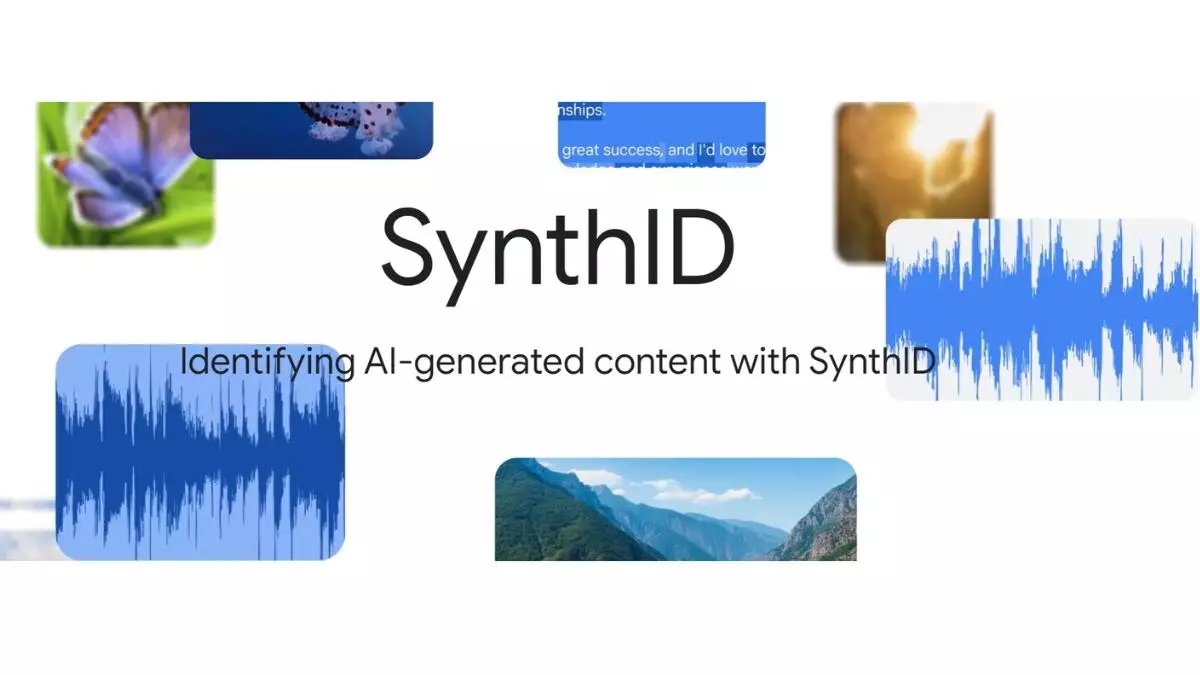In an era where artificial intelligence (AI) is becoming increasingly integrated into our digital lives, the need for transparency and authenticity in AI-generated content has never been more pressing. Google DeepMind’s recent announcement regarding SynthID—a new technology for watermarking AI-generated text—offers a significant step toward achieving this transparency. While it currently focuses solely on text, the implications of this technology could prove profound in mitigating misinformation and enhancing the integrity of online discourse.
SynthID utilizes machine learning models to embed a distinctive watermark into AI-generated text. Unlike traditional watermarking methods that fail to adapt to the nuances of language, SynthID functions by predicting word sequences based on contextual analysis. This innovative approach involves substituting certain predicted words with synonyms from its extensive database, effectively creating a ‘hidden mark’ within the text itself. For instance, the word that follows a specific term can be predetermined to maintain the integrity of the original message while embedding its unique signature.
Additionally, SynthID showcases its versatility; although currently limited to text, Google’s broader ambitions suggest the tool’s potential for multimedia applications, such as images, audio, and video. However, the advanced watermarking processes employed for visual or auditory content have yet to be released publicly, leaving an air of curiosity around their implementation.
Detecting AI-generated content presents a formidable challenge, particularly with the rapid advancement of text generation models capable of producing increasingly sophisticated narratives. Studies indicate that AI-generated text now constitutes a significant volume of online information, with research from Amazon Web Services suggesting that over 57% of sentences available online may have undergone translation via AI tools. Thus, without effective detection methods, the risk of misinformation proliferating through social media and other platforms becomes alarmingly high.
What makes text particularly difficult to watermark is the inherent flexibility and rephrasing capabilities of language. Even if traditional watermarking methods were effective, malicious actors can easily circumvent detection by altering or rephrasing the original content. SynthID’s predictive architecture aims to alleviate these issues, although the landscape remains fraught with challenges. The question lingering in the minds of tech experts and ethicists alike is whether this technology will sufficiently address the rampant spread of disinformation.
The introduction of SynthID represents a critical milestone for businesses and individual developers striving for authenticity in their content. Google DeepMind has made this technology part of its Responsible Generative AI Toolkit, reinforcing its commitment to ethical AI practices. By making SynthID available for free, Google is democratizing access to this fundamental resource, equipping various industries—from marketing to journalism—with the tools necessary to verify the authenticity of their content.
With digital misinformation posing threats to national elections and public perception, the stakes are incredibly high. SynthID’s adoption could contribute significantly toward maintaining factual integrity in our digital spaces, fostering a healthier online environment that values truthfulness.
Despite its potential advantages, the ethical considerations surrounding SynthID and similar technologies warrant careful examination. The ability for any entity, including malicious actors, to generate AI-driven content may lead to a new era of sophisticated misinformation campaigns. This reality presses for ongoing regulatory oversight and a collective commitment from tech companies to ensure accountability regarding the use of such tools.
Looking forward, the evolution of watermarking technologies like SynthID will hinge on its adaptability to innovations in AI and changing societal needs. As the demand for transparency in AI escalates, developing effective detection methods for a broad array of media types will be critical.
While Google DeepMind’s SynthID presents promising advancements in the realm of AI content detection, it is essential to approach the implementation of such technologies thoughtfully, taking into account the complexities of language, potential misuse, and the overarching goal of fostering a more truthful digital environment.

Leave a Reply